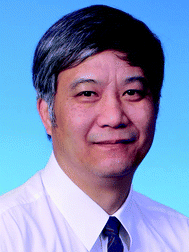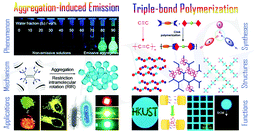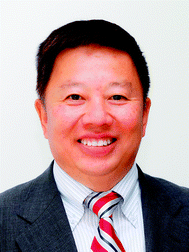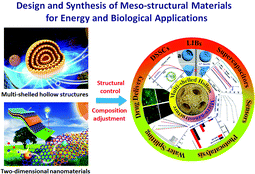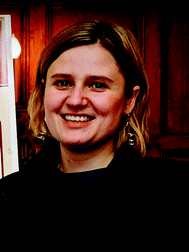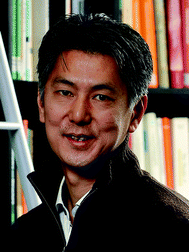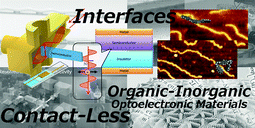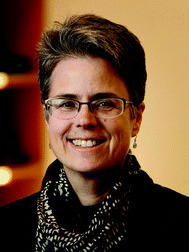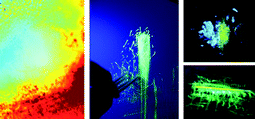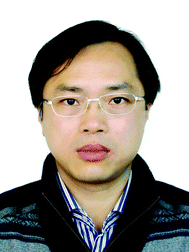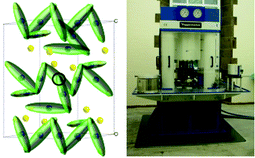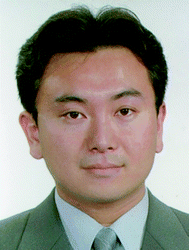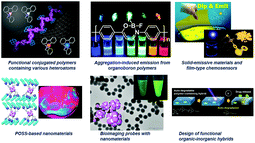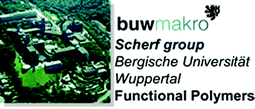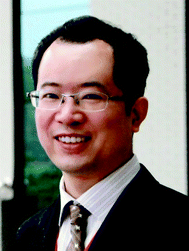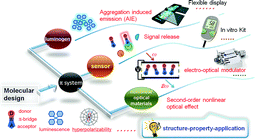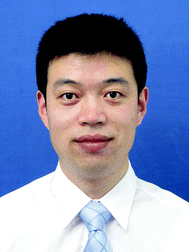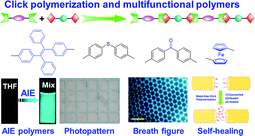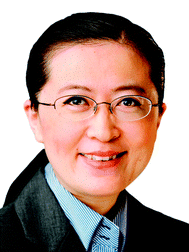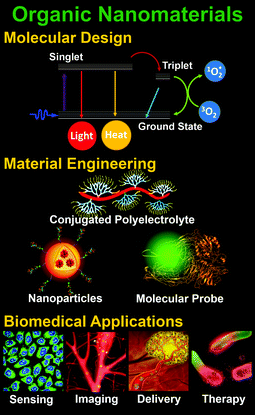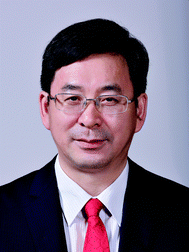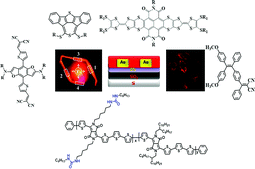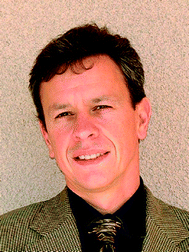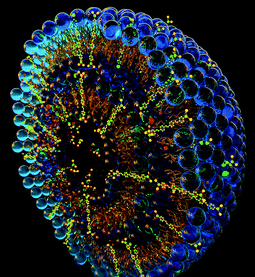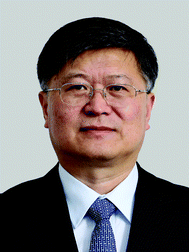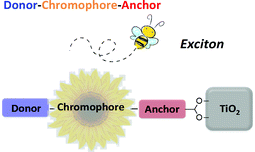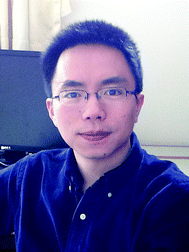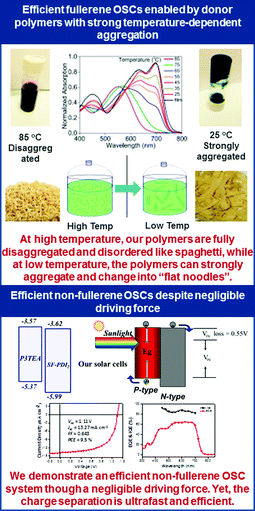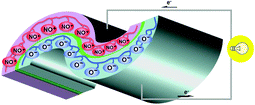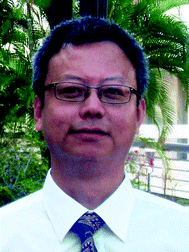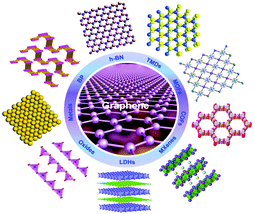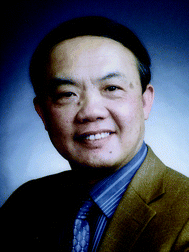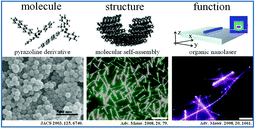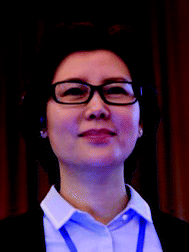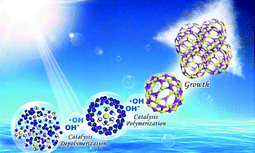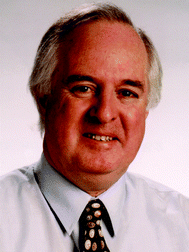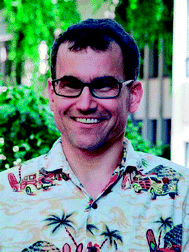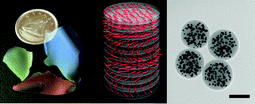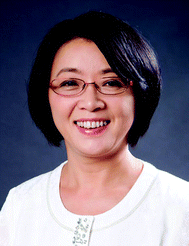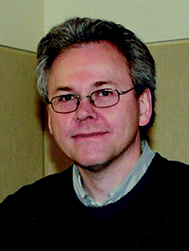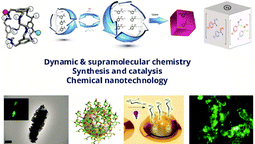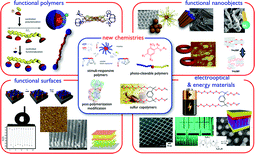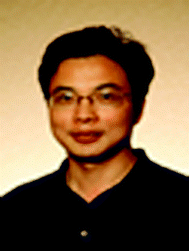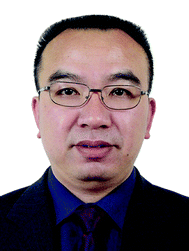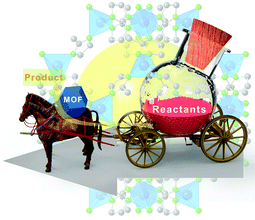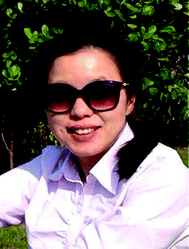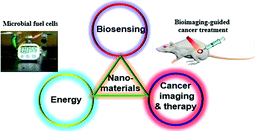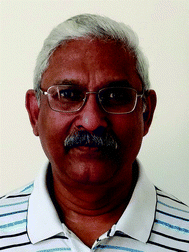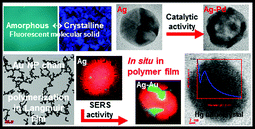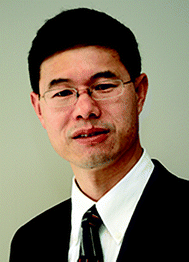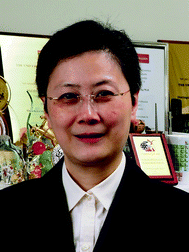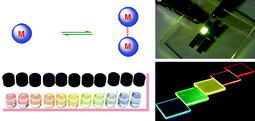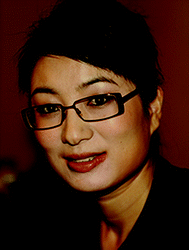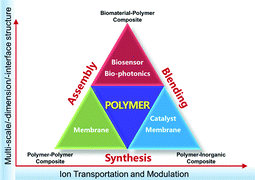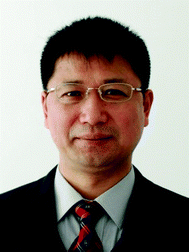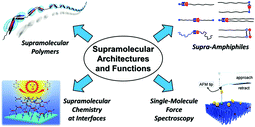DOI: 10.1039/C6QM90002J
(Editorial)
Mater. Chem. Front., 2017, 1, 12-23
Meet the Editorial Board and Advisory Board of Materials Chemistry Frontiers
Abstract
Materials Chemistry Frontiers is led and supported by a high profile Editorial Board and an international Advisory Board of leading material chemists. We are pleased to introduce you to all our board members in the inaugural journal issue.
Editorial Board members
Ben Zhong Tang
Ben Zhong Tang is Stephen K. C. Cheong Professor of Science at the Hong Kong University of Science and Technology (HKUST). His research interests include materials science, polymer chemistry and biomedical engineering. He received BS and PhD degrees from South China University of Technology and Kyoto University, respectively, and conducted postdoctoral research at the University of Toronto. He joined the Department of Chemistry at HKUST in 1994. He was elected to the Chinese Academy of Sciences and the Royal Society of Chemistry in 2009 and 2013, respectively. He has been listed by Thomson Reuters as a Highly Cited Researcher in two disciplines: Chemistry and Materials Science. He received a Natural Science Award from the Chinese Government and a Senior Research Fellowship from the Croucher Foundation in 2007.
Representative research
Dan Wang
Dan Wang graduated from Jilin University in 1994. He entered a master's degree program at his alma mater in the same year. He obtained his PhD from Yamanashi University in Japan in 2001. He was recruited by the Hundred Talent Program of the CAS, and served as professor of the Institute of Process Engineering, CAS from February 2004. He was awarded the National Science Fund for Distinguished Young Scholars in 2013. He is a fellow of the Royal Society of Chemistry, and sits on the advisory boards of several international journals, such as Energy & Environmental Science, Advanced Science and Advanced Materials Interfaces. In recent years, he has mainly focused on the design and controllable synthesis of functional inorganic materials with porous or hollow structures, and their applications in solar cells, Li-ion batteries and photocatalyst and gas sensors.
Representative research
Natalia B. Shustova
Natalia Shustova received her MS degree in Materials Science in 2004 from Moscow State University (MSU), Russia, and two PhD degrees, the first in Physical Chemistry in 2005 from MSU and the second in Inorganic Chemistry in 2010 from Colorado State University. She then did postdoctoral research at the Massachusetts Institute of Technology. In 2013 she joined the faculty at the University of South Carolina as an Assistant Professor of Chemistry. She is the recipient of an NSF CAREER Award, an MIT Infinite Kilometer Postdoctoral Award, an MIT/Bruker Symposium Award, a German Academic Exchange (DAAD) Graduate Research Scholarship, an Electrochemical Society Herbert H. Uhlig Summer Fellowship, and a Humboldt University (Berlin) L. Euler Student Fellowship. Her current research interests are graphitic hybrid materials for sustainable energy conversion, sensors, switches, and artificial biomimetic systems.
Representative research
Shu Seki
Shu Seki graduated from the University of Tokyo in 1993, and received his PhD degree in 2001 from Osaka University. He joined Argonne National Laboratory, USA in 1993, and Delft University of Technology in 2001. He was appointed as Professor of Applied Chemistry, Graduate School of Engineering, Osaka University in 2009. He was appointed as Professor of Molecular Engineering, Graduate School of Engineering, Kyoto University in 2015. His research is primarily focused on the physical chemistry of condensed matter, functional organic materials, and nanomaterials.
Representative research
Cassandra L. Fraser
Cassandra Fraser is a Professor of Chemistry at the University of Virginia, with joint appointments in Biomedical Engineering and the School of Architecture. She specializes in responsive materials for imaging, sensing and detection, specifically oxygen sensing biomaterials, mechanochromic luminescence materials and polymeric metal complexes. Fraser holds degrees from Kalamazoo College (BA 1984), Harvard Divinity School (MTS 1988) and The University of Chicago (PhD 1993, advisor: Brice Bosnich). She was an NIH postdoctoral fellow with Robert Grubbs at the California Institute of Technology (1993–1995). She was awarded a Presidential Early Career Award for Scientists and Engineers, an NSF CAREER Award, an Alfred P. Sloan Research Fellowship, and young professor awards from Dupont and 3M. She has been recognized with a Radcliffe Fellowship, an ACS Green Chemistry Institute Fellowship, a Japanese Society for the Promotion of Science Fellowship, and a Rockefeller Foundation Bellagio Residency. Her teaching and mentoring accolades include the Cavaliers Distinguished Teaching Professorship and induction into the University Teaching Academy. Previously she has served on editorial advisory boards for Macromolecules and ACS Applied Materials and Interfaces. Recently she was elected a Fellow of the American Association for the Advancement of Science (AAAS).
Representative research
Feihe Huang
Feihe Huang, born in 1973, obtained his PhD from Virginia Tech under the guidance of Prof. Harry W. Gibson in March 2005. He then joined Prof. Peter J. Stang's group at the University of Utah as a postdoctor. He is Qiushi Chair Professor of Zhejiang University. His current research interests are supramolecular polymers and pillararene chemistry. He is a National Science Fund (China) for Distinguished Young Scholars winner and a Fellow of the Royal Society of Chemistry. Awards and honors he has received include the Chinese Chemical Society AkzoNobel Chemical Sciences Award, the RSC Cram Lehn Pedersen Prize in Supramolecular Chemistry, and an RSC Polymer Chemistry Lectureship award. His publications have been cited 12
![[thin space (1/6-em)]](https://www.rsc.org/images/entities/char_2009.gif) 655 times with an h-index of 60. He has served as a guest editor for Chem. Soc. Rev., Acc. Chem. Res., Chem. Rev., and Chem. Commun. He sits on the Advisory Boards of Chem. Soc. Rev., Chem. Commun., Acta Chim. Sinica, Macromolecules, ACS Macro Lett., and Polym. Chem.
655 times with an h-index of 60. He has served as a guest editor for Chem. Soc. Rev., Acc. Chem. Res., Chem. Rev., and Chem. Commun. He sits on the Advisory Boards of Chem. Soc. Rev., Chem. Commun., Acta Chim. Sinica, Macromolecules, ACS Macro Lett., and Polym. Chem.
Representative research
J. Paul Attfield
Paul Attfield holds a Chair in Materials Science at Extreme Conditions at the School of Chemistry, University of Edinburgh, and he is the Director of the Centre for Science at Extreme Conditions. He received BA and DPhil degrees from Oxford University, and he was a Co-Director of the Interdisciplinary Research Centre in Superconductivity at the University of Cambridge from 1991 to 2003. He received the Royal Society of Chemistry's Meldola and Corday-Morgan medals and Peter Day award, and he was elected a Fellow of the Royal Society of Edinburgh in 2006 and of the Royal Society in 2014. Early research contributions included pioneering resonant X-ray scattering experiments of cation and valence ordering, and studies of disorder effects in functional oxides. Current research is centred on electronic and magnetic materials; a recent highlight was the solution of the 70-year old ‘Verwey’ problem of charge order in magnetite – the original magnetic material.
Representative research
Kazuo Tanaka
Kazuo Tanaka received his PhD degree in 2004 from Kyoto University, and worked at Stanford University, USA, Kyoto University, and RIKEN as a postdoctoral fellow. Until recently, he has studied synthetic chemistry based on DNA for developing DNA wires to construct molecular circuits and fluorescent nucleobases to detect point mutations in genomes. In 2007, he moved to the Department of Polymer Chemistry, Graduate School of Engineering, Kyoto University, and in 2015, he was promoted to associate professor. His research projects especially focus on the design of new functional materials based on heteroatom-containing polymers and organic–inorganic polymer hybrids for developing optoelectronic devices and bio-related materials.
Representative research
Ullrich Scherf
Ullrich Scherf studied chemistry at Friedrich-Schiller-Universität Jena, Germany, and received his PhD degree in 1988 under the supervision of Hans-Heinrich Hörhold. He spent one postdoctoral year at Institut für Tierphysiologie, Sächsische Akademie der Wissenschaften zu Leipzig in the group of Heinz Penzlin. In 1990 he joined the Max-Planck-Institute for Polymer Research, Mainz, Germany (Klaus Müllen group) and obtained his habilitation from the Johannes-Gutenberg-Universität Mainz in 1996. From 2000–2002 he worked as Associate Professor for Polymer Chemistry at Universität Potsdam, and since 2002 he has been Full Professor for Macromolecular Chemistry at Bergische Universität Wuppertal, both in Germany. He has published ca. 650 papers in the field of functional polymer materials; his current h-index is 75 (WoS). In 1998 he received the Meyer-Struckmann Research Award, and in 2011 he was received the Odysseus Senior Award, FWO, Flanders.
Representative research
Zhen Li
Zhen Li received his BSc and PhD degrees from Wuhan University (WHU) in China in 1997 and 2002, respectively, under the supervision of Prof. Jingui Qin. In 2003–2004, he worked at the Hong Kong University of Science and Technology as a Research Associate in the group of Prof. Ben Zhong Tang. From 2010, he worked at Georgia Institute of Technology in the group of Prof. Seth Marder. In 2014, he worked at the National University of Singapore as a visiting professor for one month. He has been a full professor at WHU since 2006, and his research interests are in the development of organic molecules and polymers with new structure and function for organic electronics and photonics. He has published more than 230 papers, with an h-index of 50.
Representative research
Advisory Board members
Anjun Qin
Anjun Qin received his BS and PhD degrees from Shanxi University and the Institute of Chemistry, Chinese Academy of Sciences in 1999 and 2004, respectively. He did his postdoctoral research at the Hong Kong University of Science & Technology and Zhejiang University with Professor Ben Zhong Tang in 2005–2008. He joined Zhejiang University as an Associate Professor in 2008 and moved to South China University of Technology with a promotion to Full Professor in 2013. He has published >210 peer-reviewed papers, with total citations of >6200. He was awarded the National Science Fund for Outstanding Young Scholars in 2015. Qin's interests include the development of new polymerizations based on triple-bond building blocks and the construction of organic/polymeric opto-electronic materials with advanced properties.
Representative research
Bin Liu
Bin Liu received a BS degree from Nanjing University and a PhD degree from the National University of Singapore (NUS) before her postdoctoral training at the University of California, Santa Barbara. She joined the Chemical and Biomolecular Engineering Department of NUS in late 2005, and was named Dean's Chair Professor in 2014. Her current research focuses on organic nanomaterials for biomedical and energy applications. Dr Liu is one of the world's top 1% Highly Cited Researchers in Materials Science. Dr Liu is a Fellow of the Royal Society of Chemistry and serves as an Associate Editor for Polymer Chemistry.
Representative research
Deqing Zhang
Deqing Zhang studied chemistry at Beijing Normal University from 1983 to 1987. He then joined the Institute of Chemistry, Chinese Academy of Sciences (ICCAS) as a graduate student and obtained his MS in Organic Chemistry in 1990. He conducted research on electron donor–acceptor cyclophanes at the Max-Planck Institute for Medical Research in Heidelberg (Germany) under the supervision of Prof. Dr H. A. Staab, and received his Doctoral degree (DR. RER. NAT.) from Ruprecht-Karls University Heidelberg in 1996. He is now a research professor at the Institute of Chemistry, Chinese Academy of Sciences (ICCAS) and the director of the Institute. His research interests include the development of external stimuli-responsive molecular systems for molecular switches, logic gates and chemical/bio-sensors. Recently, he has focused his research on the design and synthesis of new conjugated molecular systems for organic functional materials. He has published more than 260 papers in peer-reviewed journals. He serves as an editorial advisory board member for several scientific journals including Adv. Mater., Adv. Funct. Mater., ACS Interface Appl. Mater., Adv. Sci. and Mater. Chem. Front. He is also one of the co-editors of ACS Omega.
Representative research
Guillermo C. Bazan
Guillermo C. Bazan is a Professor in the Departments of Chemistry & Biochemistry and Materials at the University of California, Santa Barbara and Director of the Center for Polymers and Organic Solids. He obtained his PhD at MIT working under the direction of Professor Richard R. Schrock. His current interests lie in the design of conjugated materials for optoelectronic devices and for mediating microbial systems, with particular emphasis on transmembrane electron transfer. Relevant recognitions include Thomson Reuters “Most Influential Scientific Minds” (2015), Fellow of the Royal Society of Chemistry, Top 50 Material Scientists by Citation and Impact, Thomson Reuters (2011), Chang Jiang Scholars Professor, Fellow of the American Association for the Advancement of Science, American Chemical Society Cope Scholar Award, Bessel Award of the Humboldt Foundation, NSF Special Creativity Award, Camille and Henry Dreyfus Teacher-Scholar Award and the Sloan Research Fellow Award. His h-index is 96.
Representative research
He Tian
He Tian is a Professor at East China University of Science & Technology (ECUST) in Shanghai. He obtained his PhD from ECUST in 1989 and was appointed Cheung Kong Distinguished Professor by the Education Ministry of China in 1999. His current research interests include the synthesis of novel functional organic dyes and supramolecular polymers as well as the development of interdisciplinary materials science that determines the electronic and optical properties of materials. Prof. Tian has published over 460 papers in international journals and obtained 108 Chinese patents (over 21
![[thin space (1/6-em)]](https://www.rsc.org/images/entities/char_2009.gif) 000 total citations, h-index: 80 from Web of Science August 2016). He was selected as a member of the Chinese Academy of Science (2011) and a Fellow of TWAS – The World Academy of Sciences – for the advancement of science in developing countries (2013).
000 total citations, h-index: 80 from Web of Science August 2016). He was selected as a member of the Chinese Academy of Science (2011) and a Fellow of TWAS – The World Academy of Sciences – for the advancement of science in developing countries (2013).
Representative research
Henry He Yan
He Yan (Henry) obtained his PhD in Chemistry at Northwestern University with Professor Tobin Marks. After that, Yan spent most of his research career at Polyera Corporation, a leading research company in the organic electronics industry. In 2009, Yan and his team published the first high-mobility n-type semiconducting polymer in Nature and the work was referred to as the “new transistor age” on the cover page of Nature. As recognition of this achievement, Yan was invited to receive the IdTechEx Printed Electronics “Best Organic Material” award in Dresden, Germany in 2010. After joining the Hong Kong University of Science and Technology in 2012, Yan's group achieved single-junction organic solar cells (OSCs) with a record efficiency of 11.5%, which was officially certified and noted in the renowned NREL “Best Research-Cell Efficiency” chart, marking the first time a Hong Kong research institution had appeared on this chart. The most recent achievement by Yan's group was the demonstration of a non-fullerene OSC that exhibits nearly zero charge separation driving force yet achieves ultra-fast and efficient charge separation (Nat. Energy, 2016, 1, 16089). This breakthrough shows that it is possible to develop OSCs with low voltage loss and hence efficiencies of near 20%.
Representative research
Hiroyuki Nishide
Hiroyuki Nishide is a Professor at the Department of Applied Chemistry, School of Advanced Science and Engineering, Waseda University, Tokyo, Japan. He received his PhD in 1975, and has been a visiting researcher at Free University Berlin and Polytechnic University New York. He has conducted research in the field of synthesis and applications of functional polymers, recently focusing on organic polymers for rechargeable batteries and photovoltaic cells. He has published more than 500 journal articles, and is Past-President of the Society of Polymer Science, Japan, of the Federation of Asian Polymer Societies, and of Japan Union of Chemical Science and Technology.
Representative research
Hua Zhang
Hua Zhang completed his PhD with Prof. Zhongfan Liu at Peking University. In July 2006, he joined the School of Materials Science and Engineering at Nanyang Technological University (NTU), and was promoted to Full Professor on Sept. 1, 2013. He has published 370+ papers in journals including Science, Nat. Chem., Nat. Rev. Mater., Nat. Commun., Sci. Adv., Chem. Soc. Rev., Acc. Chem. Res., J. Am. Chem. Soc., Angew. Chem., Int. Ed., Adv. Mater., Nano Lett. and ACS Nano, with citations of 28
![[thin space (1/6-em)]](https://www.rsc.org/images/entities/char_2009.gif) 000+ and an h-index of 82. He was elected as Academician of the Asia Pacific Academy of Materials in 2015 and Fellow of the Royal Society of Chemistry in 2014. He was also listed in the “Highly Cited Researchers” and the “World's Most Influential Scientific Minds” by Thomson Reuters in 2014 and 2015 respectively. He has received the ACS Nano Lectureship Award (2015), the World Cultural Council (WCC) Special Recognition Award (2013), the ONASSIA Foundation Lectureship (Greece, 2013) and the SMALL Young Innovator Award (Wiley-VCH, 2012). His current research interests focus on the synthesis of ultrathin 2D nanomaterials and their hybrid composites for various applications; the controlled synthesis, characterization and application of novel metallic and semiconducting nanomaterials; and complex heterostructures.
000+ and an h-index of 82. He was elected as Academician of the Asia Pacific Academy of Materials in 2015 and Fellow of the Royal Society of Chemistry in 2014. He was also listed in the “Highly Cited Researchers” and the “World's Most Influential Scientific Minds” by Thomson Reuters in 2014 and 2015 respectively. He has received the ACS Nano Lectureship Award (2015), the World Cultural Council (WCC) Special Recognition Award (2013), the ONASSIA Foundation Lectureship (Greece, 2013) and the SMALL Young Innovator Award (Wiley-VCH, 2012). His current research interests focus on the synthesis of ultrathin 2D nanomaterials and their hybrid composites for various applications; the controlled synthesis, characterization and application of novel metallic and semiconducting nanomaterials; and complex heterostructures.
Representative research
Jiannian Yao
Jiannian Yao was born in 1953 in Fujian Province, China. He received a PhD degree in chemistry from the University of Tokyo (Japan) in 1993. He then became an associate professor in 1995 and a full professor in 1996 at the Institute of Photographic Chemistry, Chinese Academy of Sciences (CAS). He moved to the Institute of Chemistry, CAS in 1999. Prof. Yao is a well-known scientist in the research field of photochemistry, especially for his achievements in low-dimensional materials and their optoelectronics applications. He has over 400 publications in peer-reviewed journals, which have been cited over 11
![[thin space (1/6-em)]](https://www.rsc.org/images/entities/char_2009.gif) 000 times. Yao was elected as Academician of CAS in 2005, and has been Vice President of the National Natural Science Foundation of China since 2008. He currently serves as President of the Chinese Chemical Society, advisor of the China Center of Japan Science and Technology Agency and fellow of the Royal Society of Chemistry (UK). He was awarded the second-class prize of the National Natural Science Awards of China twice in 2004 and 2014. He won the Ho Leung Ho Lee Foundation Prize for Scientific and Technological Progress in 2015.
000 times. Yao was elected as Academician of CAS in 2005, and has been Vice President of the National Natural Science Foundation of China since 2008. He currently serves as President of the Chinese Chemical Society, advisor of the China Center of Japan Science and Technology Agency and fellow of the Royal Society of Chemistry (UK). He was awarded the second-class prize of the National Natural Science Awards of China twice in 2004 and 2014. He won the Ho Leung Ho Lee Foundation Prize for Scientific and Technological Progress in 2015.
Representative research
Jihong Yu
Jihong Yu received her PhD degree from Jilin University in 1995, and worked as a postdoctoral fellow first at the Hong Kong University of Science and Technology and then at Tohoku University, Japan in 1996–1998. She has been a full Professor in the Chemistry Department, Jilin University since 1999. She was awarded the Cheung Kong Professorship in 2007 and elected as a member of the Chinese Academy of Sciences in 2015. She has co-authored over 300 research papers in journals including Science, Chem. Rev., Chem. Soc. Rev., Acc. Chem. Res., J. Am. Chem. Soc., Angew. Chem., Int. Ed., and Nat. Commun.; obtained 14 authorized Chinese Invention Patents; and edited 7 books. She was the winner of the National Prize for Natural Science and the Prize for Chinese Youth Woman Scientists. Currently, she serves as an Associate Editor of Chemical Science. She is a Council Member of Chinese Chemical Society, Fellow of the Royal Society of Chemistry, and Council Member of International Zeolite Association. Her main research interest is in the designed synthesis and application of zeolitic nanoporous materials in catalysis, separation and host–guest assembly.
Representative research
John Reynolds
John R. Reynolds is a Professor of Chemistry and Biochemistry, and Materials Science and Engineering at the Georgia Institute of Technology with expertise in polymer chemistry. He serves as a member of the Center for Organic Photonics and Electronics (COPE) and Director of the Georgia Tech Polymer Network (GTPN). Reynolds obtained his MS (1982) and PhD (1984) degrees from the University of Massachusetts in Polymer Science and Engineering. He has published over 350 peer-reviewed scientific papers, has 35 patents issued and ∼10 patents pending, and served as co-editor of the “Handbook of Conducting Polymers” which was published in 2007. He serves on the editorial board for the journals ACS Applied Materials and Interfaces, ACS Central Science, Macromolecular Rapid Communications, Polymers for Advanced Technologies, and the Journal of Macromolecular Science, Chemistry. Reynolds' research interests have involved electrically conducting and electroactive conjugated polymers for over 35 years with work focused on the development of new polymers by manipulating their fundamental organic structure in order to control their optoelectronic and redox properties. His group has been heavily involved in developing new polyheterocycles for visible and infrared light electrochromism, along with light emission from polymer and composite LEDs (both visible and near-infrared) and light emitting electrochemical cells (LECs). Further work is directed towards using organic polymers and oligomers in charge storing supercapacitors and photovoltaic cells.
Representative research
Juyoung Yoon
Juyoung Yoon was born in Busan in 1964. He graduated with a BS from Seoul National University (1987) and received his PhD (1994) from The Ohio State University (Advisor: Dr Anthony W. Czarnik). After completing postdoctoral research at the University of California, Los Angeles (1994–1996; Advisor: Prof. Donald J. Cram) and at The Scripps Research Institute (1996–1998; Advisor: Prof. Kim D. Janda), he joined the faculty at Silla University in 1998. In 2002, he moved to Ewha Womans University, where he is currently Professor of the Department of Chemistry and Nano Science. He is a member of the Korean Academy of Science and Technology and currently a Distinguished Professor of Ewha. His research interests include the investigation of fluorescent probes, molecular recognition, and new organic functional materials. He has published 260 SCI research papers with an h-index of 79.
Representative research
(Reproduced from Recent progress in stimuli-induced polydiacetylenes for sensing temperature, chemical and biological targets, Chem. Commun., 2016, 52, 9178–9196.)
Kenneth P. Ghiggino
Ken Ghiggino is the Masson Professor of Chemistry at the University of Melbourne, Australia. He is a Fellow of both the Royal Society of Chemistry and the Royal Australian Chemical Institute and is a past President of the Asian and Oceanian Photochemistry Association. He received his undergraduate and PhD degrees from the University of New South Wales, followed by postdoctoral studies at the University of Southampton, UK. His research interests are in the areas of materials science and photochemistry, with particular interests in new materials for light harvesting, solar energy conversion and artificial photosynthesis. He has published more than 200 journal papers and book chapters.
Representative research
Mark J. MacLachlan
Mark MacLachlan received his BSc degree at UBC and his PhD degree from the University of Toronto (1999), working with Ian Manners and Geoff Ozin. He was an NSERC postdoctoral fellow with Prof. Timothy Swager at M.I.T., then returned to UBC in 2001 to begin his independent career. Mark is a Fellow of the Royal Society of Canada and holds the Canada Research Chair in Supramolecular Materials. He also leads a graduate training program in nanomaterials science & technology (CREATE NanoMat). He has been the recipient of a Humboldt fellowship (2009–2010), an E. W. R. Steacie Memorial Fellowship (2012–2014), the Rutherford Medal of the Royal Society of Canada (2013), the Steacie Prize (2014), and the Award for Excellence in Materials Chemistry of the Canadian Society for Chemistry (2015). Mark's research interests span coordination chemistry, macrocycle chemistry, nanomaterials, mesoporous materials, photonic structures, and biopolymers. In his recent research, he has used cellulose nanocrystals and chitin nanocrystals as templates to construct mesoporous photonic materials.
Representative research
Min-Hui Li
Min-Hui Li is a research director of the French National Center for Scientific Research (CNRS) working in a CNRS unity (IRCP) at the École Nationale Supérieure de Chimie de Paris (ENSCP, also called Chimie ParisTech). She received her BS in 1986 and her MS in 1988 from Tsinghua University in Beijing, China. She conducted her PhD work in polymer chemistry and physical chemistry at the Laboratoire Léon Brillouin (LLB) in the French Atomic Energy Commission (CEA) Saclay, and obtained her PhD degree from Pierre and Marie Curie University, Paris in 1993. After a post-doc at the French Institute of Petroleum (IFP), she joined the CNRS as a tenure research scientist at the Centre de Recherche Paul Pascal (CRPP) in Bordeaux in 1994. She moved to the Institut Curie in Paris in 1997, and was promoted to Research Director (full professor grade in CNRS) in 2011. The research interests of Min-Hui Li focus on soft matter chemistry, polymer self-assembly, liquid crystal polymers and elastomers, soft matter actuators, stimuli-responsive polymer materials and nanomaterials for drug delivery and biomedical imaging.
Representative research
Olof Ramström
Olof Ramström is Professor of Chemistry at the Department of Chemistry, KTH – Royal Institute of Technology, Stockholm, Sweden. He was awarded MSc- and PhD-degrees from Lund Institute of Technology/Lund University, Sweden, and after a research period in Strasbourg, France, he joined KTH at the turn of the year 2002. His research activities are of multidisciplinary nature and focused at the interfaces between chemistry, materials science, and biology. The central theme is molecular recognition in general, and the study of complex receptor–ligand interactions and chemical networks in particular. Current research activities involve the development of new concepts, methods and applications with a focus on: (1) dynamic and supramolecular chemistry; (2) selective synthesis and catalysis; and (3) chemical nanotechnology for biomedical applications.
Representative research
Patrick Théato
Patrick Théato studied chemistry at the University of Mainz and the University of Massachusetts, Amherst, and obtained his PhD degree from the University of Mainz in 2001. After postdoctoral studies at Seoul National University supported by a Feodor Lynen Postdoctoral Research Fellowship and at Stanford University, he completed his Habilitation at the University of Mainz in 2007. From 2009 to 2012 he held a joint appointment at Seoul National University within the WCU program. In 2011, he accepted a prize senior lectureship at the University of Sheffield. Shortly after this, he moved to the University of Hamburg, where he is currently an associate (W2) professor for polymer chemistry. His research interests are post-polymerization modifications, stimuli-responsive polymers, hydrogels, self-healing materials, surface modifications, energy generation and storage, functional nanoobjects, and nanofibers.
Representative research
Qichun Zhang
Qichun Zhang obtained his BS at Nanjing University in China in 1992, MS in physical organic chemistry (organic solid lab) at the Institute of Chemistry, Chinese Academy of Sciences (Prof. Peiji Wu/Daoben Zhu's group, ICCAS, Beijing) in 1998, MS in organic chemistry (Prof. Fred Wudl's group) at University of California, Los Angeles (USA), and completed his PhD in inorganic chemistry at University of California Riverside (Prof. Pingyun Feng's group, USA) in 2007. Then, he joined Prof. Kanatzidis' group at Northwestern University as a Postdoctoral Fellow (Oct. 2007–Dec. 2008). In Jan. 2009, he joined the School of Materials Science and Engineering at Nanyang Technological University (NTU, Singapore) as an Assistant Professor. In Mar. 2014, he was promoted to Associate Professor with tenure and in Dec. 2014, he became an adjunct Associate Professor in the Division of Chemistry and Biological Chemistry, School of Physical and Mathematical Sciences, Nanyang Technological University. He also has three years’ working experience at the research institute of Nanjing Chemical Industry Co. (1992–1995) and two years’ research experience at ICCAS (1998–2000). He received a TCT fellowship in 2013 and a lectureship from National Taiwan University in 2014. Currently, he is an associate editor of J. Solid State Chem. He has published >190 papers and 4 patents (h-index: 37).
Rong Cao
Rong Cao was born in Fujian province, China. He graduated from the University of Science and Technology of China in 1986 and obtained his PhD at the Fujian Institute of Research on the Structure of Matter (FJIRSM), Chinese Academy of Sciences (CAS), in 1993. Following post-doctoral experience at the Hong Kong Polytechnic University and a JSPS Fellowship at Nagoya University, he became a professor at FJIRSM in 1998. Now, he is the director of FJIRSM. His main research interests include supramolecular chemistry, inorganic–organic hybrid materials and nanocatalysis.
Representative research
(Reproduced from Multifunctional metal–organic framework catalysts: synergistic catalysis and tandem reactions. DOI: 10.1039/C6CS00250A)
Shaoqin Liu
Shaoqin Liu received her Bachelor degree and PhD degree from Wuhan University of Hydraulic and Electric Engineering in 1994 and from Changchun Institute of Applied Chemistry (Chinese Academy of Science) in 1999, respectively. She started her chemistry research career in the group of Professor Shaojun Dong at Changchun Institute of Applied Chemistry, developing polyoxometalate-based thin films. After her PhD degree, she moved to the Max-Planck-Institute of Colloids and Interfaces as a Humboldt Fellow. She developed polyoxometalate-based functional materials. In 2004, she joined the National Research Council of Canada as an NESRC fellow to study direct methanol fuel cells. In 2007, she started her academic career as a Full Professor at Harbin Institute of Technology. Her current research interests include the preparation of nanostructured materials and their applications in energy, biosensing and cancer therapy.
Representative research
T. P. Radhakrishnan
T. P. Radhakrishnan is currently Professor of Chemistry and J. C. Bose National Fellow at the University of Hyderabad, India. He obtained his BSc and MSc degrees in Chemistry from Calicut University, Kerala and the Indian Institute of Technology Madras. He carried out his doctoral research on molecular magnetic materials at Princeton University, under the supervision of Prof. Zoltan G. Soos, and obtained his PhD degree in 1987. Following post-doctoral research in chemical graph theory with Prof. William C. Herndon at the University of Texas at El Paso, he joined the University of Hyderabad as a Lecturer and became a full Professor in 2001. He is a Fellow of the Indian Academy of Sciences, Indian National Science Academy and the National Academy of Sciences, India; he is also a Fellow of the Institute for Advanced Studies, Hebrew University of Jerusalem, and an Academician of the Asia Pacific Academy of Materials. He is an Associate Editor of the Journal of Chemical Sciences (Indian Academy of Sciences). The primary focus of the research of Prof. Radhakrishnan is on molecular and nanomaterials – molecular crystals, Langmuir–Blodgett films, polymer nanocomposites – exploring attributes such as optical, nonlinear optical and catalytic properties.
Representative research
Wenbin Lin
Wenbin Lin is the James Franck Professor of Chemistry at the University of Chicago. Before assuming his current position on July 1, 2013, Lin was the Kenan Distinguished Professor of Chemistry and Pharmacy at the University of North Carolina at Chapel Hill (UNC-CH). Lin obtained a BS degree from the University of Science and Technology (Hefei, China) in 1988 and received a PhD degree in chemistry from the University of Illinois at Urbana-Champaign in 1994. He was a NSF postdoctoral fellow at Northwestern University before starting his independent academic career in 1997. Lin's research efforts focus on designing molecular materials for sustainability and human health. His group has worked in a variety of research areas, including nonlinear optical materials, porous materials for catalysis and separation, solar fuels, and nanomedicine. Lin's group has published over 250 peer-reviewed papers, and his work has been well received by the community, as evidenced by his selection to be among the top 10 chemists in the 1999–2009 decade based on per article citations. Lin has won numerous professional honors for his contributions to the rational design of functional molecular materials (content obtained from http://linlab.uchicago.edu/people.html).
Vivian W. W. Yam
Vivian Wing-Wah Yam's major research interests are in the areas of inorganic/organometallic chemistry, photochemistry and supramolecular chemistry. Her major research accomplishments and innovations involve the employment of synthetic strategies and excited state properties to create efficient strong light-absorbing chromophoric and luminescent molecular functional materials, and the exploration of photosensitizer materials for efficient solar energy harvesting. Yam was elected a Member of the Chinese Academy of Sciences at the age of 38 as the youngest member of the Academy, Foreign Associate of the US National Academy of Sciences, Foreign Member of Academia Europaea, Fellow of TWAS and Founding Member of The Academy of Sciences of Hong Kong. She was the Laureate of the 2011 L’Oréal-UNESCO For Women in Science Award and recipient of the 2016 Japan Society of Coordination Chemistry International Award, the 2015 Royal Society of Chemistry Ludwig Mond Award, the 2005–2006 Royal Society of Chemistry Centenary Medal and 2005 State Natural Science Award. Yam currently serves as an Associate Editor of Inorganic Chemistry and Member of the International Editorial Advisory Boards of Journal of the American Chemical Society, Angewandte Chemie, Accounts of Chemical Research and Chemical Science.
Representative research
Yan Xiang
Yan Xiang is a full professor of Materials Chemistry, Beihang University. She received a PhD in Physical Chemistry from Sichuan University, China in 2001, and joined Beihang University in the same year. She spent one year working on green catalysis as a postdoc at Carnegie Mellon University in 2005–2006. Prof. Xiang leads the Beijing Key Laboratory of Bioinspired Energy Materials and Devices. Her current research focuses on the development of hybrid materials and devices for energy conversion, including proton exchange membrane fuel cells (PEMFCs) and photovoltaic nanosystems based on microbial rhodopsins. She has published over 80 papers in international academic journals including Chem. Soc. Rev., Adv. Mater., Adv. Energy. Mater. and ACS Nano. She has served as principal investigator of over ten research projects, including a National 863 Program key project, a key project of the National Natural Science Foundation of China (NSFC), and the excellent young scientist foundation of NSFC. She is also a Fellow of the Royal Society of Chemistry and Vice Dean of Youth Committee of Chinese Materials Research Society.
Representative research
Xi Zhang
Xi Zhang is a professor at the Department of Chemistry of Tsinghua University, Beijing, China. He received a PhD degree in Polymer Chemistry and Physics at Jilin University in 1992. He joined the Department of Chemistry at Jilin University as a lecturer in 1992 and was then promoted to professor in 1994. He received a Changjiang special professorship from the Ministry of Education in 1999. He moved to Tsinghua University in late 2003. Currently, he serves as Director of the Department of Chemical Science, National Natural Science of Foundation of China; Director of Academic Committee of Tsinghua University; and Vice President of Chinese Chemical Society. He was selected as a Member of the Chinese Academy of Sciences (2007), RSC Fellow (2008) and ACS Fellow (2016). His research interests focus on combining polymer chemistry with supramolecular chemistry to develop molecular engineering of functional supramolecular systems.
Representative research
| This journal is © the Partner Organisations 2017 |

